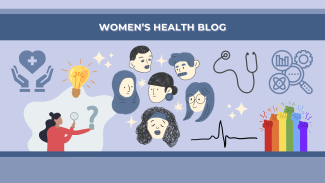Authors: Raquel Rodriguez, BSc Kinesiology, McGill University | Editors: Romina Garcia de leon, Janielle Richards (Blog Co-Coordinators) | Expert Reviewer: Lindsey Thurston
Published: Friday November 1st, 2024
Transgender, gender-diverse, and non-binary (TGD) individuals are people whose gender identity does not align with their sex assigned at birth. TGD people face unique stressors related to their stigmatized gender identity and expression and are thus more likely to experience mental health issues compared to cisgender individuals, whose sex assigned at birth aligns with their gender identity. These unique stressors are known as minority stressors which include external conditions and events (i.e., discrimination and victimization) as well as internal factors (i.e., expectations of discrimination and internalization of negative societal attitudes). Increasing evidence indicates that TGD individuals face disparities in various cardiovascular (CV) risk factors and higher rates of CV morbidity and mortality compared to their cisgender peers. The population of individuals who identify as TGD is growing, as such, it is important to quantify minority stress when conducting cardiovascular research in TGD populations.
TGD & Minority Stress
The leading explanation for the health disparities observed between TGD and cisgender individuals is the minority stress theory. This theory states that, in addition to the common stressors faced by everyone, members of minority groups, including the TGD community, endure a greater range of unique stressors due to their minority status. These unique stressors are either external in nature (i.e., distal stressors) or are felt internally by the individual (i.e., proximal stressors). Distal stressors include experiences such as misgendering, stigma, discrimination, rejection, and victimization based on their gender identity. Proximal stressors include internalized stigma or transphobia, negative expectations, and concealing one’s gender identity. The theory also states that some of these individuals may also experience individual- and/or community-level resilience as a result of their minority status, allowing them to persist and thrive in the face of adversity against these stressors.
Minority Stress & How it Affects Cardiovascular Outcomes
Both internal and external stressors can negatively affect the body's homeostasis. Psychosocial stress is an inevitable part of daily life and it is linked to an increased risk of CV disease (CVD) events. Acute and chronic mental stress are both associated with the long-term development of CV issues. Distal and proximal stressors raise the overall stress levels of TGD individuals beyond those faced by the cisgender population, negatively affecting CV health behaviours and increasing the risk of various poor mental and physical health outcomes, including CVD.
Minority Stress & Cardiovascular Health Behaviours
TGD populations have higher chances of negative CV outcomes and associated risk factors as a result of a variety of multifaceted health behaviours. TGD persons may participate less in regular physical activity than the cisgender population which puts them at a higher risk of developing CVD. Moreover, TGD adolescents have self-reported more disproportionately unsafe weight management and disordered eating behaviours compared to their cisgender peers. Research has reported elevated levels of alcohol use within the TGD population compared to the general population as a result of victimization, bullying, and minority stress.
Future Directions
Research in TGD populations should prioritize the unique impact of minority stress on cardiovascular health outcomes. Unlike research conducted on cisgender individuals, studies on TGD populations must consider distal and proximal stressors like discrimination and internalized stigma. Improved measurement tools that capture the full range of minority stressors are essential for reliable research findings. By incorporating these unique considerations, future research can contribute to a more accurate and comprehensive understanding of TGD health, ultimately leading to better health outcomes for this medically underserved and growing population.
Why is this topic important?
This topic is important because the growing population of TGD individuals deserve and require proper and accurate healthcare services which stem from properly conducting research to accurately depict their physiological capacities. Researchers cannot conduct studies on this population in the same way as they do cisgender people as there are unique factors to consider when properly assessing the TGD population. The minority stress that they experience contributes to their cardiovascular capacities and therefore cannot be neglected when doing research on the TGD population.
